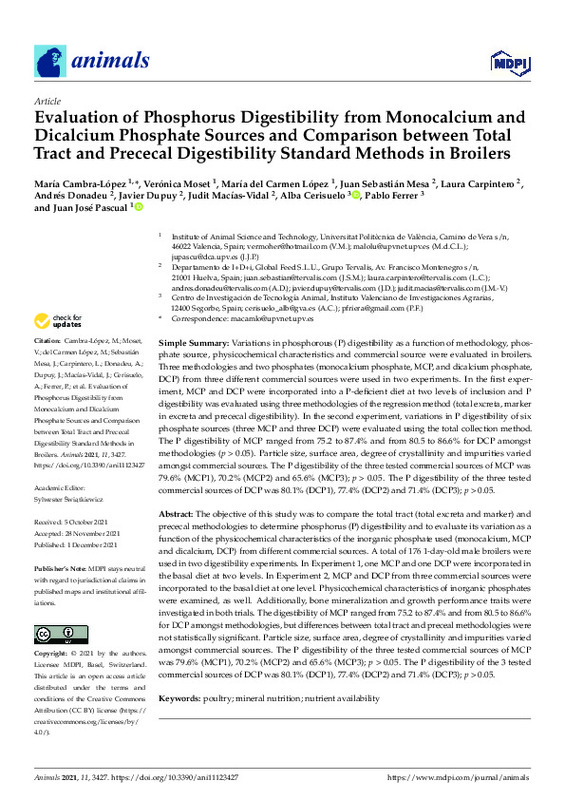JavaScript is disabled for your browser. Some features of this site may not work without it.
Buscar en RiuNet
Listar
Mi cuenta
Estadísticas
Ayuda RiuNet
Admin. UPV
Evaluation of Phosphorus Digestibility from Monocalcium and Dicalcium Phosphate Sources and Comparison between Total Tract and Prececal Digestibility Standard Methods in Broilers
Mostrar el registro completo del ítem
Cambra López, M.; Moset, V.; López Luján, MDC.; Sebastián Mesa, J.; Carpintero, L.; Donadeu, A.; Dupuy, J.... (2021). Evaluation of Phosphorus Digestibility from Monocalcium and Dicalcium Phosphate Sources and Comparison between Total Tract and Prececal Digestibility Standard Methods in Broilers. Animals. 11(12):1-18. https://doi.org/10.3390/ani11123427
Por favor, use este identificador para citar o enlazar este ítem: http://hdl.handle.net/10251/182911
Ficheros en el ítem
Metadatos del ítem
| Título: | Evaluation of Phosphorus Digestibility from Monocalcium and Dicalcium Phosphate Sources and Comparison between Total Tract and Prececal Digestibility Standard Methods in Broilers | |
| Autor: | Moset, Verónica Sebastián Mesa, Juan Carpintero, Laura Donadeu, Andrés Dupuy, Javier Macías-Vidal, Judith Cerisuelo, Alba | |
| Entidad UPV: |
|
|
| Fecha difusión: |
|
|
| Resumen: |
[EN] Variations in phosphorous (P) digestibility as a function of methodology, phosphate source, physicochemical characteristics and commercial source were evaluated in broilers. Three methodologies and two phosphates ...[+]
|
|
| Palabras clave: |
|
|
| Derechos de uso: | Reconocimiento (by) | |
| Fuente: |
|
|
| DOI: |
|
|
| Editorial: |
|
|
| Versión del editor: | https://doi.org/10.3390/ani11123427 | |
| Agradecimientos: |
|
|
| Tipo: |
|









